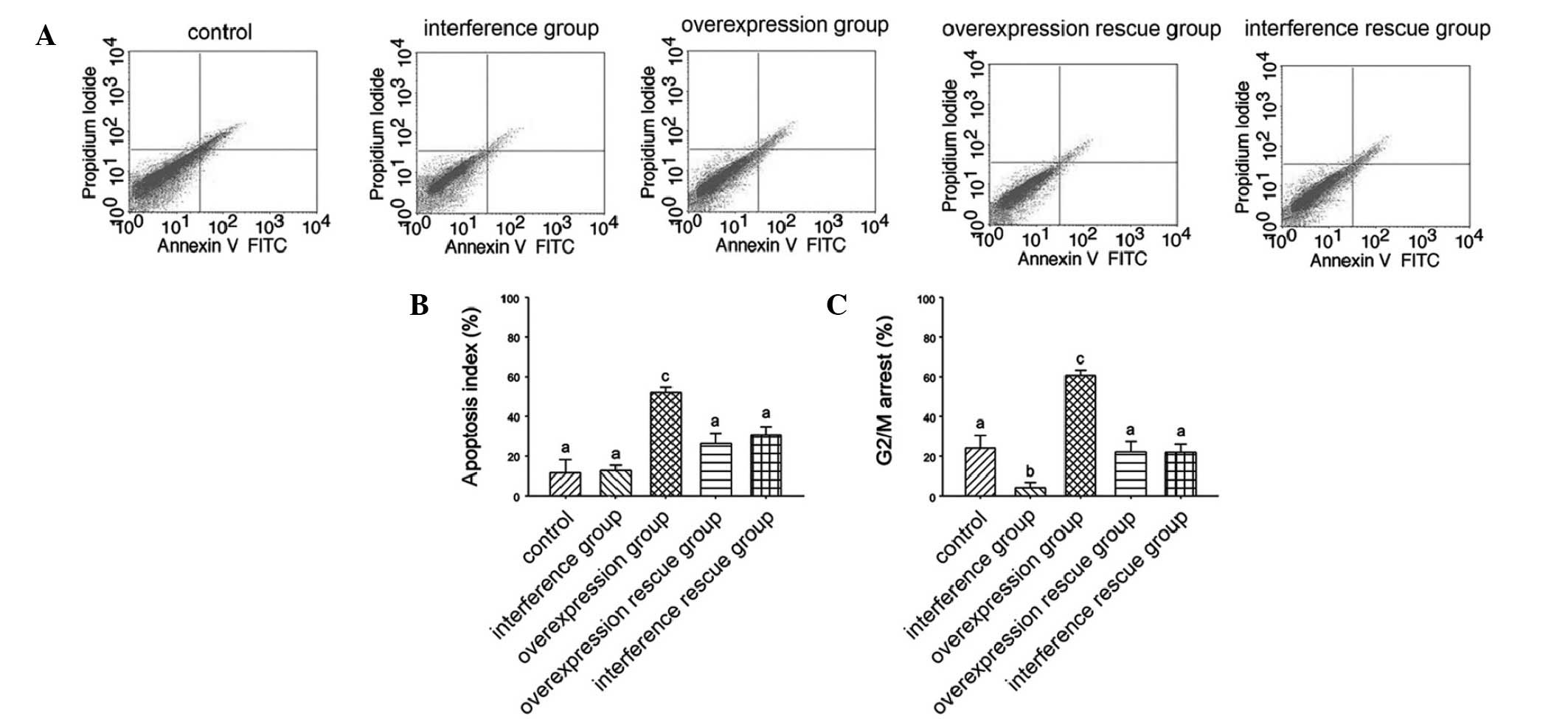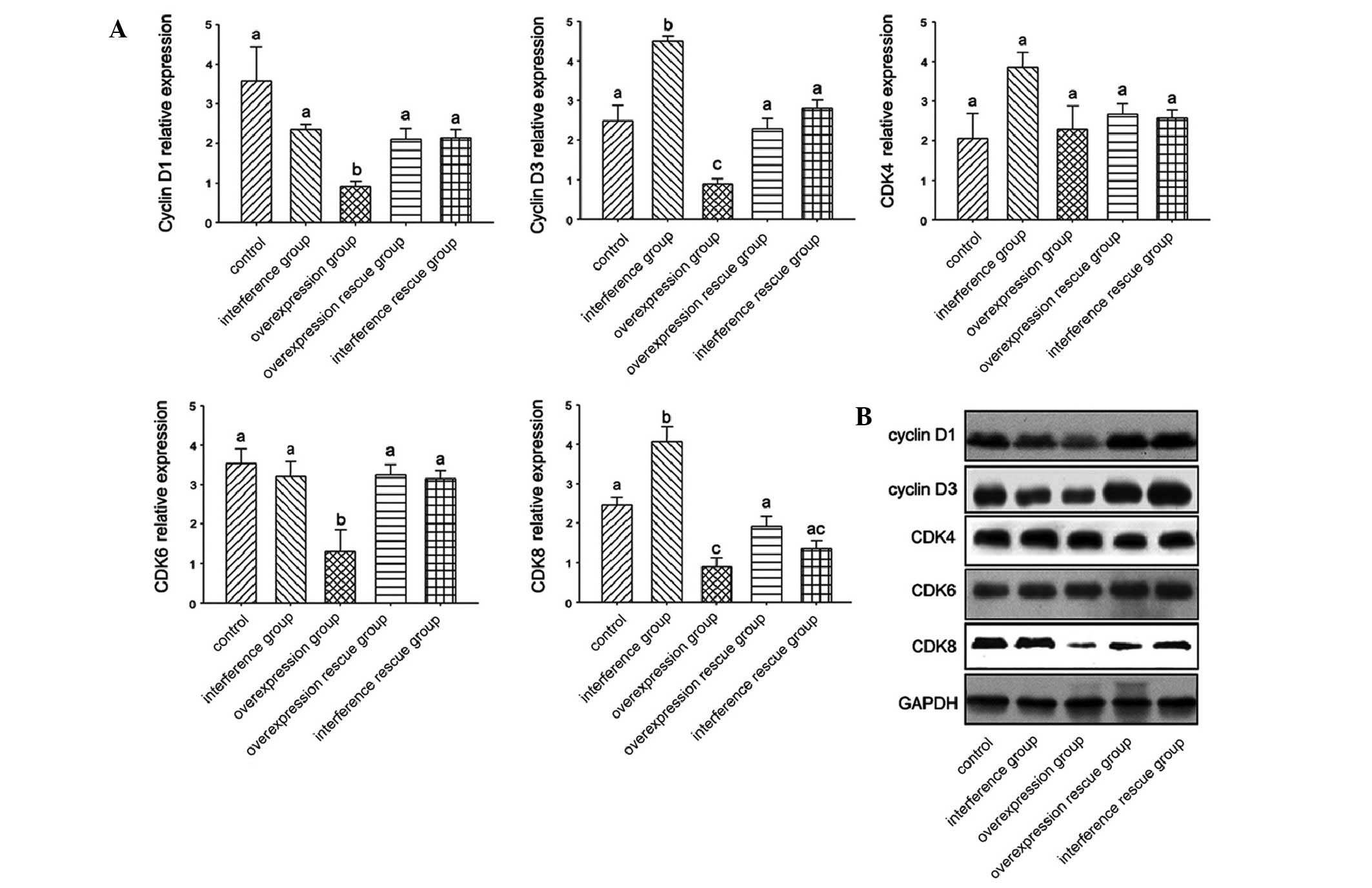|
1
|
Portela A and Esteller M: Epigenetic
modifications and human disease. Nat Biotechnol. 28:1057–1068.
2010. View
Article : Google Scholar : PubMed/NCBI
|
|
2
|
Baylin SB and Jones PA: A decade of
exploring the cancer epigenome-biological and translational
implications. Nat Rev Cancer. 11:726–734. 2011. View Article : Google Scholar : PubMed/NCBI
|
|
3
|
Kulaeva OI, Gaykalova DA and Studitsky VM:
Transcription through chromatin by RNA polymerase II: histone
displacement and exchange. Mutat Res. 618:116–129. 2007. View Article : Google Scholar : PubMed/NCBI
|
|
4
|
Neely KE and Workman JL: The complexity of
chromatin remodeling and its links to cancer. Biochim Biophys Acta.
1603:19–29. 2002.PubMed/NCBI
|
|
5
|
Hake SB, Xiao A and Allis CD: Linking the
epigenetic ‘language’ of covalent histone modifications to cancer.
Br J Cancer. 90:761–769. 2004.
|
|
6
|
Strahl BD and Allis CD: The language of
covalent histone modifications. Nature. 403:41–45. 2000. View Article : Google Scholar : PubMed/NCBI
|
|
7
|
Peterson CL and Laniel MA: Histones and
histone modifications. Curr Biol. 14:R546–R551. 2004. View Article : Google Scholar : PubMed/NCBI
|
|
8
|
Redon C, Pilch D, Rogakou E, et al:
Histone H2a variants H2AX and H2AZ. Curr Opin Genet Dev.
12:162–169. 2002. View Article : Google Scholar : PubMed/NCBI
|
|
9
|
Pehrson JR and Fried VA: macroH2A, a core
histone containing a large nonhistone region. Science.
257:1398–1400. 1992. View Article : Google Scholar : PubMed/NCBI
|
|
10
|
Kustatscher G, Hothorn M, Pugieux C, et
al: Splicing regulates NAD metabolite binding to histone macroH2A.
Nat Struct Mol Biol. 12:624–625. 2005. View
Article : Google Scholar : PubMed/NCBI
|
|
11
|
Brooks WH: X chromosome inactivation and
autoimmunity. Clin Rev Allergy Immunol. 39:20–29. 2010. View Article : Google Scholar : PubMed/NCBI
|
|
12
|
Chadwick BP and Willard HF: Histone H2A
variants and the inactive X chromosome: identification of a second
macroH2A variant. Hum Mol Genet. 10:1101–1113. 2001. View Article : Google Scholar : PubMed/NCBI
|
|
13
|
Kapoor A, Goldberg MS, Cumberland LK, et
al: The histone variant macroH2A suppresses melanoma progression
through regulation of CDK8. Nature. 468:1105–1109. 2010. View Article : Google Scholar : PubMed/NCBI
|
|
14
|
Rickert P, Seghezzi W, Shanahan F, et al:
Cyclin C/CDK8 is a novel CTD kinase associated with RNA polymerase
II. Oncogene. 12:2631–2640. 1996.PubMed/NCBI
|
|
15
|
Donner AJ, Szostek S, Hoover JM, et al:
CDK8 is a stimulus-specific positive coregulator of p53 target
genes. Mol Cell. 27:121–133. 2007. View Article : Google Scholar : PubMed/NCBI
|
|
16
|
Sánchez I and Dynlacht BD: New insights
into cyclins, CDKs, and cell cycle control. Semin Cell Dev Biol.
311–321. 2005.PubMed/NCBI
|
|
17
|
Satyanarayana A and Kaldis P: Mammalian
cell-cycle regulation: several Cdks, numerous cyclins and diverse
compensatory mechanisms. Oncogene. 28:2925–2939. 2009. View Article : Google Scholar : PubMed/NCBI
|
|
18
|
Fisher RP: CDKs and cyclins in
transition(s). Curr Opin Genet Dev. 7:32–38. 1997. View Article : Google Scholar : PubMed/NCBI
|
|
19
|
Kastan MB and Bartek J: Cell-cycle
checkpoints and cancer. Nature. 432:316–323. 2004. View Article : Google Scholar : PubMed/NCBI
|
|
20
|
Andreassi MG: DNA damage, vascular
senescence and atherosclerosis. J Mol Med (Berl). 86:1033–1043.
2008. View Article : Google Scholar : PubMed/NCBI
|
|
21
|
Morgan DO: Cyclin-dependent kinases:
engines, clocks, and microprocessors. Annu Rev Cell Dev Biol.
13:261–291. 1997. View Article : Google Scholar : PubMed/NCBI
|
|
22
|
Tyson JJ, Csikasz-Nagy A and Novak B: The
dynamics of cell cycle regulation. Bioessays. 24:1095–1109. 2002.
View Article : Google Scholar : PubMed/NCBI
|
|
23
|
Sherr CJ and Roberts JM: CDK inhibitors:
positive and negative regulators of G1-phase progression. Genes
Dev. 13:1501–1512. 1999. View Article : Google Scholar : PubMed/NCBI
|
|
24
|
Taylor WR and Stark GR: Regulation of the
G2/M transition by p53. Oncogene. 20:1803–1815. 2001. View Article : Google Scholar : PubMed/NCBI
|
|
25
|
Sporn JC, Kustatscher G, Hothorn T, et al:
Histone macroH2A isoforms predict the risk of lung cancer
recurrence. Oncogene. 28:3423–3428. 2009. View Article : Google Scholar : PubMed/NCBI
|
|
26
|
Novikov L, Park JW, Chen H, et al:
QKI-mediated alternative splicing of the histone variant macroH2A1
regulates cancer cell proliferation. Mol Cell Biol. 31:4244–4255.
2011. View Article : Google Scholar : PubMed/NCBI
|
|
27
|
Haugstetter A, Loddenkemper C, Lenze D, et
al: Cellular senescence predicts treatment outcome in metastasised
colorectal cancer. Br J Cancer. 103:505–509. 2010. View Article : Google Scholar : PubMed/NCBI
|
|
28
|
Buschbeck M and Di Croce L: Approaching
the molecular and physiological function of macroH2A variants.
Epigenetics. 5:118–123. 2010. View Article : Google Scholar : PubMed/NCBI
|
|
29
|
Zhang R and Adams PD: Heterochromatin and
its relationship to cell senescence and cancer therapy. Cell Cycle.
6:784–789. 2007. View Article : Google Scholar : PubMed/NCBI
|
|
30
|
Collado M, Gil J, Efeyan A, et al: Tumour
biology: senescence in premalignant tumours. Nature. 436:6422005.
View Article : Google Scholar : PubMed/NCBI
|
|
31
|
Dardenne E, Pierredon S, Driouch K, et al:
Splicing switch of an epigenetic regulator by RNA helicases
promotes tumor-cell invasiveness. Nat Struct Mol Biol.
19:1139–1146. 2012. View Article : Google Scholar : PubMed/NCBI
|
|
32
|
Shtutman M, Zhurinsky J, Simcha I, et al:
The cyclin D1 gene is a target of the β-catenin/LEF-1 pathway. Proc
Natl Acad Sci USA. 96:5522–5527. 1999.
|
|
33
|
Fu M, Wang C, Li Z, et al: Minireview:
Cyclin D1: normal and abnormal functions. Endocrinology.
145:5439–5447. 2004. View Article : Google Scholar : PubMed/NCBI
|
|
34
|
Hunter T and Pines J: Cyclins and cancer.
II: Cyclin D and CDK inhibitors come of age. Cell. 79:573–582.
1994. View Article : Google Scholar : PubMed/NCBI
|
|
35
|
Gray N, Détivaud L, Doerig C, et al:
ATP-site directed inhibitors of cyclin-dependent kinases. Curr Med
Chem. 6:859–875. 1999.PubMed/NCBI
|
|
36
|
Lapenna S and Giordano A: Cell cycle
kinases as therapeutic targets for cancer. Nat Rev Drug Discov.
8:547–566. 2009. View
Article : Google Scholar : PubMed/NCBI
|












